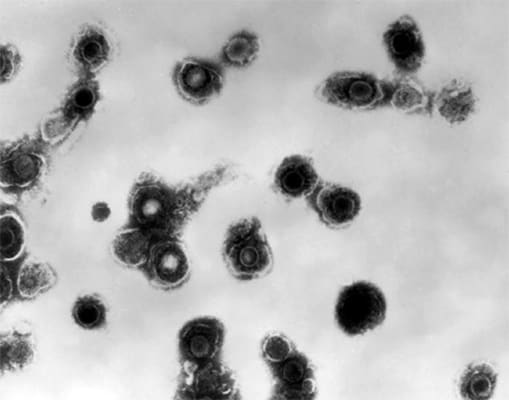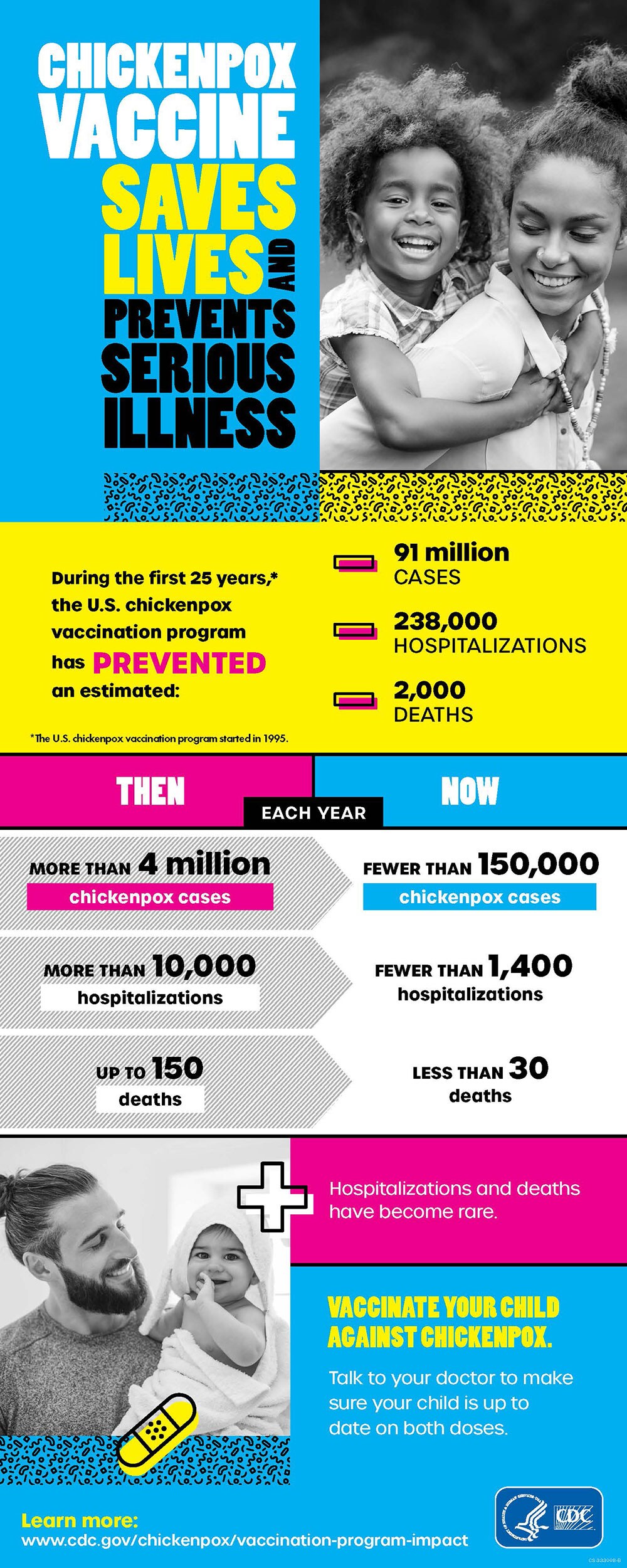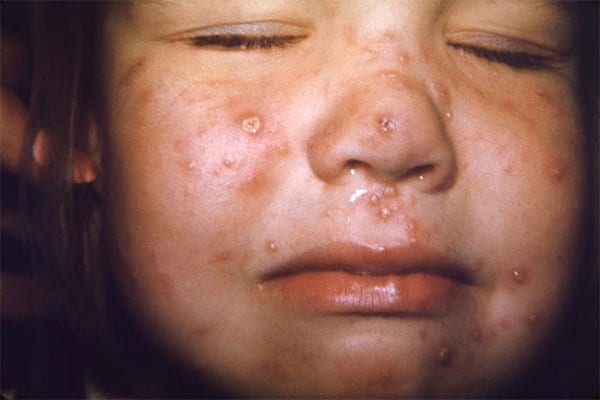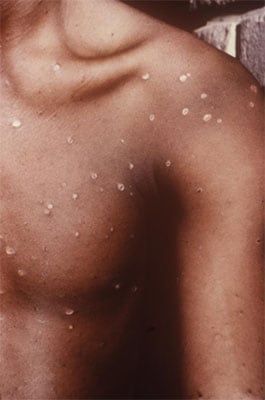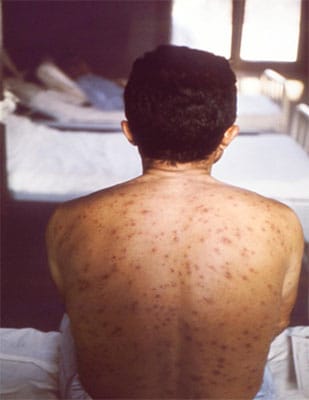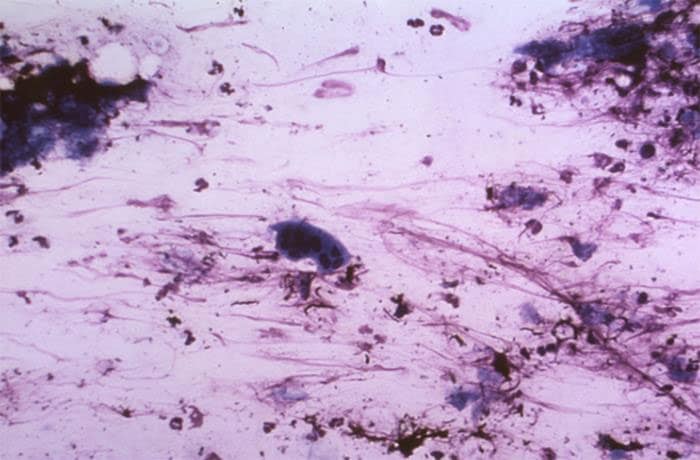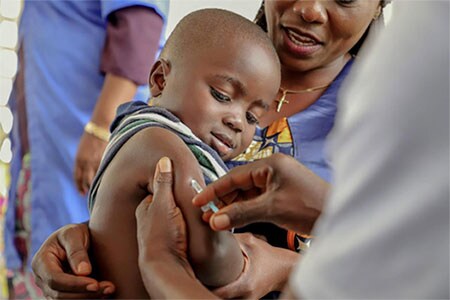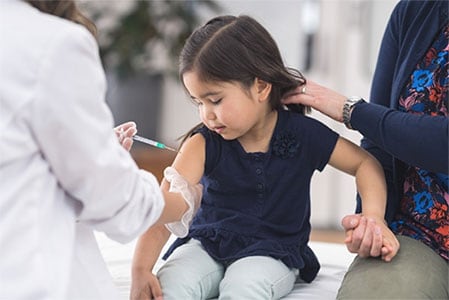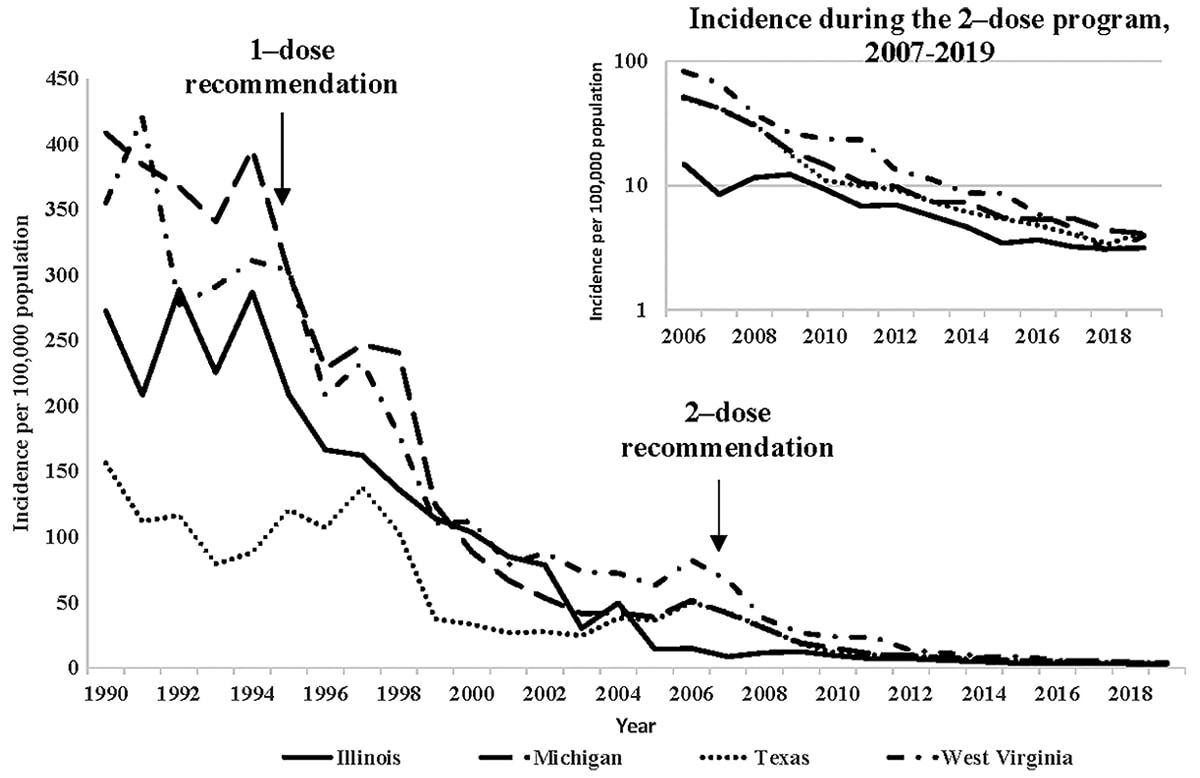Teen Newsletter: Chickenpox
November 2023
The David J. Sencer CDC Museum (CDCM) Public Health Academy Teen Newsletter was created to introduce teens to public health topics. Each newsletter focuses on a different public health topic that CDC studies. Newsletter sections: Introduction, CDC’s Work, The Public Health Approach, and Out of the CDC Museum Collection.
Chickenpox (also called varicella) is a highly contagious disease caused by the varicella-zoster virus (VZV). It is most commonly known for causing an itchy, blister-like rash that first appears on the chest, back, and face, and then spreads over the entire body. Other symptoms may include fever, tiredness, loss of appetite, and headache. The illness usually lasts about 4 to 7 days. Chickenpox can be serious, even life-threatening, especially in babies, adolescents, adults, people who are pregnant or people who have weakened immune systems. Chickenpox used to be very common in the United States. In the early 1990s, about 4 million people got chickenpox, 10,500 to 13,000 were hospitalized, and 100 to 150 died each year.
Chickenpox spreads easily from one person to another, mainly through close contact. If one person has it, up to 90% of the people close to that person who are not immune will also become infected. Students in school settings can spread chickenpox easily because they are constantly in close contact with each other.

Chickenpox rash on the back of an individual.
The best way to prevent chickenpox is to get the chickenpox vaccine. The vaccine is very safe and effective at preventing the disease, and most people who get the vaccine will not get chickenpox. Everyone – children, adolescents, and adults – should get two doses of the chickenpox vaccine if they have never had chickenpox or were never vaccinated.
There are two chickenpox vaccines available for use in the United States – Varivax® and ProQuad®. Varivax® contains only the chickenpox vaccine, whereas ProQuad® contains a combination of measles, mumps, rubella, and chickenpox vaccines (MMRV).
CDC’s National Center for Immunization and Respiratory Diseases (NCIRD) is responsible for working on chickenpox. Specifically, its Division of Viral Diseases (DVD), within NCIRD, holds most of this responsibility.
One of the missions of NCIRD and DVD is the prevention of disease, disability, and death through immunization. From children to older adults, they work to support the specific needs of all populations at risk of vaccine-preventable diseases.
On both NCIRD and DVD’s websites, you can find information on chickenpox – including its signs and symptoms, vaccination efforts, transmission, prevention and treatment, complications, and so much more.
The Immunization Services Division (ISD) of NCIRD, also plays a role in the efforts to prevent chickenpox. Their mission is to protect individuals and communities from vaccine-preventable diseases. They provide federal funds and contracts to purchase vaccines, provide technical and financial support to immunization programs in state, local, and tribal health departments and public education, and conduct evaluation and research.
Public health problems are diverse and can include infectious diseases, chronic diseases, emergencies, injuries, environmental health problems, as well as other health threats. Regardless of the topic, we take the same systematic, science-based approach to a public health problem by following four general steps.
1. Surveillance (What is the problem?). In public health, we identify the problem by using surveillance systems to monitor health events and behaviors occurring among a population.
The chickenpox vaccine has been used in the United States for 28 years! For this section of the newsletter, we are going to look at the chickenpox vaccine as our public health intervention.
Chickenpox was not distinguished from smallpox until the end of the 19th century. In 1875, Rudolf Steiner proved that chickenpox was caused by an infectious agent by inoculating volunteers with fluids from a patient with chickenpox. In 1954, Thomas Weller used cell cultures to isolate the varicella-zoster virus from blister fluid of patients with chickenpox.
As mentioned in the Introduction, chickenpox used to be very common in the United States during the late 20th century. Chickenpox surveillance practices have evolved since the disease first became nationally notifiable in 1972. They especially improved greatly after 1995, when the chickenpox vaccine was first recommended for use in the United States, which will be discussed more in the rest of this case study.
2. Risk Factor Identification (What is the cause?). After we’ve identified the problem, the next question is, “What is the cause of the problem?” For example, are there factors that might make certain populations more susceptible to diseases, such as something in the environment or certain behaviors that people are practicing?
Before the chickenpox vaccine became available in the United States in 1995, virtually all Americans contracted chickenpox at some point in their lives. Approximately 90% of all cases occurred among children younger than age 15 years, and approximately 39% of all cases were among children between the ages of 1 and 4. Adults 20 years old or older accounted for only 7% of cases.
This age distribution was probably a result of early exposure to chickenpox in preschool and child care settings as more young children attended these facilities in the 1990s. Students in school settings also can spread chickenpox easily because they are constantly in close contact with each other.
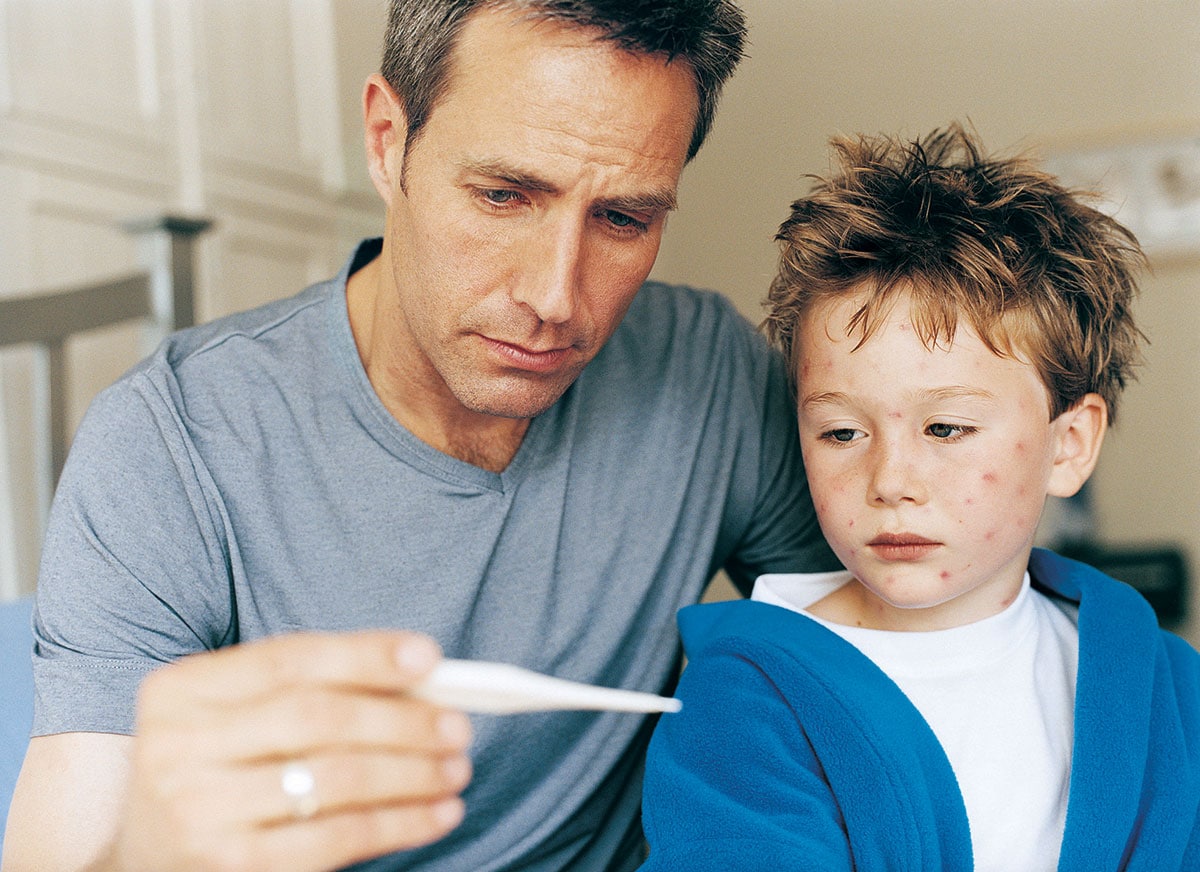
3. Intervention Evaluation (What works?). Once we’ve identified the risk factors related to the problem, we ask, “What intervention works to address the problem?” We look at what has worked in the past in addressing this same problem and if a proposed intervention makes sense with our affected population.
Vaccinations throughout childhood are essential because they help provide immunity before children are exposed to potentially life-threatening diseases. Vaccines are tested to ensure that they are safe and effective for children to receive at the recommended ages. Different types of vaccines work in different ways to offer protection. With all types of vaccines, your body will remember how to fight that virus in the future.
Immunity is the body’s way of preventing disease. A baby’s immune system is not fully developed at birth, which can put them at greater risk for infection. Vaccines reduce a child’s risk of infection by working with the body’s natural defenses to help safely develop protection against disease.
Vaccination is a highly effective, safe, and easy way to help keep people healthy, which is why the chickenpox vaccination was created and then widely administered. Keep reading to learn more about the chickenpox vaccine.
4. Implementation (How did we do it?). In the last step, we ask, “How can we implement the intervention? Given the resources we have and what we know about the affected population, will this work?”
The chickenpox vaccine was developed in Japan in the 1970s by Dr. Michiaki Takahashi. It was licensed for general use in Japan and Korea in 1988, and in the United States in 1995 for persons ages 12 months or older.
In 1995, CDC’s Advisory Committee on Immunization Practices (ACIP) recommended routine vaccination of all children at age 12-18 months and catch-up vaccination of all other children who were still at risk of chickenpox before the age of 13 years. In 1999, ACIP updated these recommendations to include vaccination requirements for child care and school entry. In 2007, a second dose was added for routine vaccination of children before school entry and since then the chickenpox vaccination in the United States includes a first dose at age 12-15 months, a second dose at age 4-6 years, and catch-up two dose vaccination of all older children, adolescents, and adults if they have never had chickenpox or were never vaccinated.
This is the graph with the chickenpox vaccine coverage, overall for the US. All 50 states and D.C. have state laws that require children entering child care or public schools to have certain vaccinations.
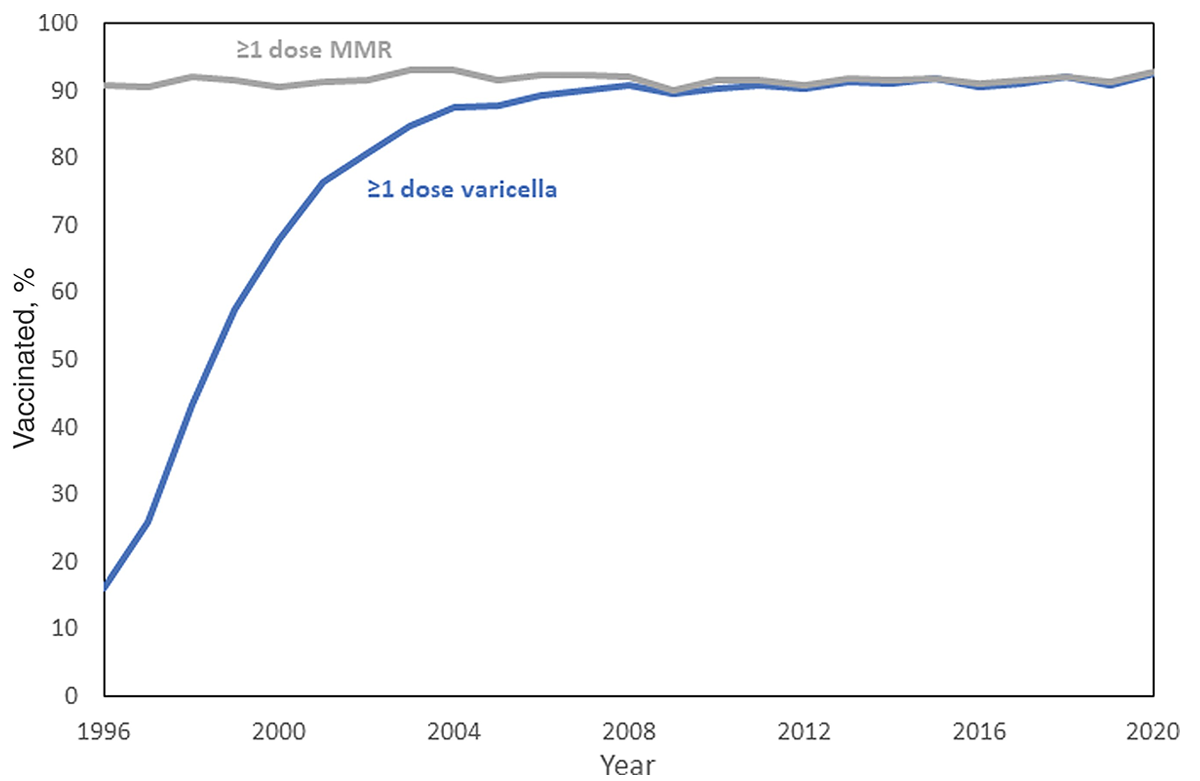
Estimated vaccination coverage for ≥1 dose of chickenpox (varicella) and ≥1 dose of measles-mumps-rubella (MMR) vaccine among children aged 19–35 months, National Immunization Survey–Child (NIS-Child), United States, 1996–2020.
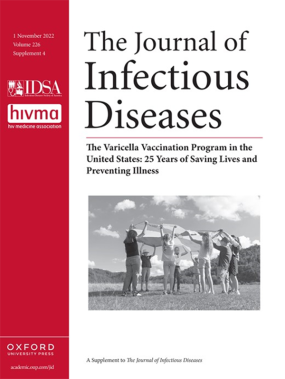 External Link Icon
External Link IconThe cover of Volume 226 of the Journal of Infectious Disease from November 2022. This volume highlighted the Varicella Vaccination Program in the United States.
In 2005, a combination measles, mumps, rubella, and varicella (MMRV) vaccine was licensed in the United States for people ages 12 months through 12 years.
The chickenpox vaccination program was successfully implemented in the United States, with high vaccine uptake and has made a significant public health and economic impact since it started in 1995. During the first 25 years of the U.S. chickenpox vaccination program, the vaccine prevented an estimated 91 million cases, 238,000 hospitalizations, and 2,000 deaths. The program saved society more than $23 billion dollars through prevention of illness and complications by vaccination.
Since the start of the vaccination program, there has been an over 97% decrease in chickenpox cases. Now, chickenpox is rare in the United States, with fewer than 150,000 cases, 1,400 hospitalizations, and 30 deaths each year. As a result, most children don’t have to miss school in order to stay home sick or be hospitalized with chickenpox. Parents also don’t have to miss work to take care of their sick child.
To summarize the first 25 years of the impact of the vaccination program, CDC and its collaborators published 14 manuscripts in a special supplement in the Journal of Infectious Diseases highlighting the success of this important vaccine in saving lives and preventing illness. Take a look at the Journal of Infectious Disease from November 2022 (Volume 226), highlighting the accomplishments of the Varicella Vaccination Program in the United States.
Using The Public Health Approach helps public health professionals identify a problem, find out what is causing it, and determine what solutions/interventions work.
This month’s Out of the CDC Museum Collection features a book, Sanders on Small Pox, Cow Pox and Chicken Pox. The book was donated to the CDC Museum by Stanley Music, an epidemiologist who worked in Bangladesh with the Smallpox Eradication Program from 1973-1975.
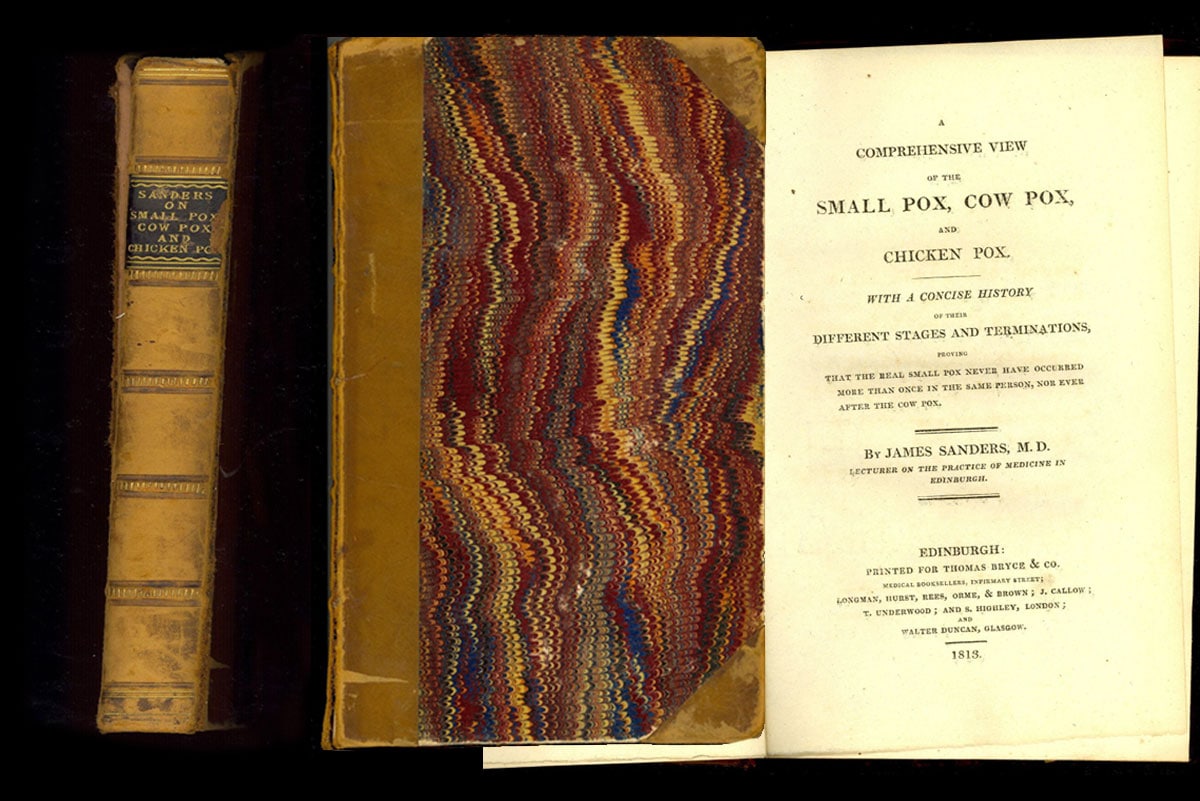
Sanders on Small Pox, Cow Pox and Chicken Pox (1813) by Dr. James Sanders.
The book’s author, Dr. James Sanders (1777-1843), was a member of the Royal Medical Society of Edinburgh – a highly respected medical society at the University of Edinburgh Medical School. Dr. Sanders published this book in Scotland for medical booksellers in 1813.
In 1796, Dr. Edward Jenner discovered that smallpox was a variant of cowpox. Throughout the next few years, he completed a myriad of experiments regarding cowpox and smallpox, including successfully creating a vaccine to protect people against them. He also coined the term vaccine, from the word vacca, meaning cow in Latin. In the early 1800s, he began vaccinating populations – inoculating people with matter collected from cowpox sores. At the start, few individuals were trusting of his new vaccine. Many people – including scientists and doctors – had hygienic, religious, scientific, or political objections. Dr. Jenner’s treatment was publicly opposed so much that violence and offensive criticism arose.
However, Dr. Sanders wrote this book in the early 1800s and mentions Dr. Jenner and his “inoculations” in the introduction. This book indicates that Dr. Sanders was really working to support the practice of vaccination and learn from Dr. Jenner.

